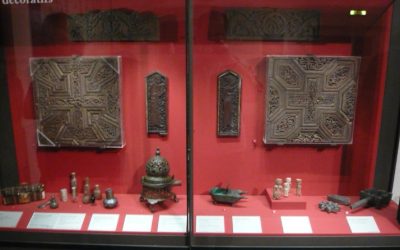History of the Egyptian Alphabet
The history of the Egyptian alphabet is a fascinating journey that traces the development of one of the earliest writing systems in the world. Originating from ancient Egypt, this script evolved over thousands of years, reflecting the rich cultural and religious beliefs of the civilization. From early hieroglyphs to later simplified forms, the Egyptian alphabet played a crucial role in documenting history, administration, and spirituality, leaving an indelible mark on the development of writing systems in the ancient world.
Origins and Development
The Egyptian alphabet, primarily represented by the hieroglyphic script, has a rich history that dates back to ancient times. Its origins can be traced to the development of early writing systems in the Nile Valley around 3300 BCE. Early pictorial symbols were used to represent objects and ideas, laying the groundwork for a more standardized form of writing. Over centuries, these symbols evolved into a complex system combining logograms, phonograms, and determinatives, which allowed for more nuanced expression and record-keeping.
The development of the Egyptian alphabet was influenced by interactions with neighboring cultures and internal innovations. During the late Predynastic period, simplified symbols known as hieratic and demotic scripts emerged for everyday administrative and religious purposes, making writing more accessible. These scripts laid the foundation for the phonetic elements seen in later alphabetic systems. The most significant transformation was the adaptation of these signs into a set of characters that represented consonant sounds, leading to the creation of an alphabetic system in the late period of Egyptian history.
Although the ancient Egyptian script was primarily hieroglyphic, it eventually incorporated alphabetic elements, especially during the Ptolemaic period when Greek influence introduced alphabetic concepts. The hieroglyphic alphabet was eventually replaced by other scripts like the Coptic alphabet, which used Greek letters and additional signs derived from hieroglyphs, enabling the preservation of Egyptian language in a more accessible alphabetic form. This development marks the transition from a complex hieroglyphic system to a more simplified alphabetic script, reflecting both cultural exchanges and the evolution of communication in ancient Egypt.
Evolution from Hieroglyphics to Alphabetic Forms
The history of the Egyptian alphabet traces a fascinating journey from the complex system of hieroglyphics to the development of more simplified alphabetic forms. Hieroglyphics, used primarily for religious and ceremonial purposes, consisted of intricate symbols representing objects, sounds, and ideas. Over time, these symbols evolved into more abstract and cursive scripts known as hieratic and demotic, which facilitated easier writing on papyrus and other materials used by the Egyptians.
The transition toward alphabetic writing began when the Egyptians and their neighboring cultures started to simplify these symbols, focusing on phonetic elements that could be combined to form words. Influences from other Semitic languages contributed to this evolution, leading to the creation of the Proto-Sinaitic script around 1850 BCE. This script introduced a limited set of symbols representing consonant sounds, laying the groundwork for alphabetic systems.
From the Proto-Sinaitic script, the Phoenician alphabet emerged around 1050 BCE, representing a true alphabet with distinct characters for consonants, which was easier to learn and use. The Phoenician alphabet was highly influential, spreading across the Mediterranean and giving rise to various alphabetic scripts, including the Greek alphabet. The Greeks adapted and expanded upon it, creating a writing system that included vowels, which significantly impacted the development of the Latin alphabet used today.
Although the Egyptian writing system remained largely hieroglyphic until it was replaced by other scripts, the underlying concepts of phonetic symbols influenced the broader development of alphabetic writing in the Mediterranean region. The evolution from hieroglyphics to alphabetic forms reflects a move towards more efficient, versatile methods of recording language, ultimately leading to the diverse alphabets used globally now, rooted in the ancient innovations of Egyptian and Semitic scripts.
Influence of Other Ancient Scripts
The history of the Egyptian alphabet is a fascinating journey that reflects the evolution of one of the earliest writing systems in human civilization. The ancient Egyptians initially used hieroglyphs, a complex system of pictorial symbols, for religious and monumental inscriptions. Over time, they developed more simplified scripts such as hieratic and demotic for everyday writing, which eventually influenced the creation of alphabetic systems. The Egyptian script notably contributed to the development of alphabetic scripts by simplifying symbols and making writing more accessible.
The influence of other ancient scripts played a significant role in shaping the Egyptian alphabet. The Proto-Sinaitic script, which emerged around 1850 BCE in the Sinai Peninsula, is considered a precursor to the Phoenician alphabet and was likely influenced by Egyptian hieroglyphs. These early alphabetic systems spread throughout the Mediterranean, ultimately giving rise to the Phoenician alphabet, which forms the basis of many modern alphabets, including Greek and Latin. The exchange of ideas between Egypt and neighboring civilizations facilitated cultural and linguistic transmission, enriching the development of writing systems.
Throughout history, the Egyptian alphabet and its derivatives have impacted many other scripts, influencing the way languages are written and understood. The transition from hieroglyphs to alphabetic scripts symbolizes a shift toward more efficient communication, enabling wider literacy and the spread of Egyptian cultural influence across the ancient world. Today, the legacy of the Egyptian alphabet endures through the study of ancient texts and the continued evolution of alphabetic writing systems worldwide.
Structure of the Egyptian Alphabet
The Egyptian alphabet, traditionally known as hieroglyphs, is a complex system of writing that combines logographic and alphabetic elements. It was used by ancient Egyptians for religious texts, inscriptions, and monumental art. Understanding its structure reveals a fascinating blend of symbols representing sounds, words, and ideas, offering insight into one of the world’s earliest writing systems.
Consonants and Vowels
The Egyptian alphabet, historically known as hieroglyphs, consists of a complex system of symbols representing both consonants and vowels. Unlike the modern English alphabet, which is primarily alphabetical, ancient Egyptian writing combined logograms, ideograms, and phonograms to convey meaning. The writing system is generally categorized into three types: consonantal signs known as uniliterals, biliterals, and triliterals, which primarily represent consonant sounds. Vowels in ancient Egyptian were often implied or marked by supplementary signs, but they were not consistently written, making the system primarily consonant-based. Over time, the script evolved from the early hieroglyphic form to hieratic and demotic scripts, which simplified writing and began to include some vowel representation. The modern understanding of the Egyptian alphabet thus encompasses a mixture of consonant symbols with limited recorded vowels, forming the foundation of ancient Egyptian language and writing tradition.
Number of Characters
The Egyptian alphabet, historically associated with hieroglyphic writing, consists of a series of symbols that represent sounds and ideas. Unlike modern alphabets, it includes a combination of logograms, phonograms, and determinatives. The structure of this ancient script was complex, serving both religious and administrative purposes in ancient Egypt. Over time, the writing system evolved into cursive forms used in writing inscriptions and manuscripts.
The English alphabet, in contrast, contains 26 characters. These characters include both uppercase and lowercase forms. The alphabet is the foundation of the English language’s writing system, used globally for communication, literature, and digital text. It is distinct from the Egyptian script, which is pictorial and symbolic rather than alphabetic in the modern sense.
Writing Direction and Orientation
The Egyptian alphabet, primarily represented by hieroglyphs, is a complex writing system that includes a mixture of logographic and alphabetic elements. It consists of around 700 to 800 symbols, with some characters serving as phonetic signs and others as ideograms. These symbols were used to record the Egyptian language across different periods, adapting over time from pictorial representations to more abstract forms.
The writing direction of ancient Egyptian hieroglyphs can be read from left to right, right to left, or top to bottom, depending on the context and the orientation of the symbols. When reading from left to right, the symbols generally face towards the right; when reading from right to left, they face the left. Hieroglyphs often appear in horizontal rows or vertical columns, with the orientation guiding the reader on how to interpret the direction of the text.
In terms of orientation, hieroglyphic signs can be arranged in various ways, but usually the signs are animated or facing the direction of reading. This flexibility allowed Egyptian scribes to write in a manner that suited the aesthetic and functional needs of different texts, whether religious inscriptions, administrative documents, or monumental carvings. The writing system’s versatility and symbolic richness made it a distinctive feature of ancient Egyptian culture.
Characteristics of the Egyptian Alphabet
The Egyptian alphabet, an essential aspect of ancient Egyptian writing, features a unique set of characteristics that distinguish it from other ancient scripts. It combines logographic symbols, where each character represents a word or concept, with phonetic elements that depict sounds. This writing system evolved over centuries, reflecting the sophistication of Egyptian culture and their literary traditions. The alphabet’s distinctive symbols and structure provide valuable insights into the civilization’s history, religion, and daily life.
Phonetic Attributes
The Egyptian alphabet is characterized by its unique set of symbols used primarily in hieroglyphic writing, which combines logographic and alphabetic elements. Each character often represents a specific object, concept, or sound, making it a rich and intricate writing system. The phonetic attributes of the Egyptian alphabet include the use of consonantal sounds, with certain symbols representing specific phonemes. Vowel sounds were generally inferred or added later, as early hieroglyphs mainly emphasized consonants. The script’s phonetic components allowed for both the representation of words and phonetic spelling, facilitating communication and record-keeping in ancient Egypt. Overall, the Egyptian alphabet’s phonetic structure showcases a blend of symbolic and sound-based elements, reflecting its dual role as both a linguistic and a religious script.
Symbolic Meanings and Associations
The Egyptian alphabet is a fascinating system of writing characterized by its use of hieroglyphic symbols that serve both phonetic and ideographic functions. These symbols often represent sounds, objects, or ideas, making the script complex and rich in meaning. The script primarily consisted of consonantal signs known as uniliteral and biliteral glyphs, which could be combined to form words and convey nuanced messages.
Many symbols within the Egyptian alphabet carry deep symbolic meanings and associations. For instance, the ankh symbol represents life and eternal existence, reflecting its importance in spiritual and religious contexts. The scarab beetle signifies rebirth and transformation, while the feather of Ma’at embodies truth, justice, and balance. Animals and objects in the hieroglyphic script often symbolize divine concepts or natural elements, tying the language to the natural and spiritual worlds.
Overall, the characteristics of the Egyptian alphabet reveal a system that is both functional and imbued with symbolic significance. Its intricate symbols and their associations demonstrate a civilization’s emphasis on spirituality, the afterlife, and the divine order, making it a unique and highly meaningful form of written communication.
Use in Different Contexts
The Egyptian alphabet, primarily represented through hieroglyphs, features a combination of logograms, phonograms, and determinatives that serve various linguistic functions. Its characters are intricate, often depicting objects, animals, or abstract symbols, allowing for both pictorial representation and phonetic sound production. This unique blend contributed to its versatility in writing religious texts, official inscriptions, and everyday communication.
In different contexts, the Egyptian alphabet was adapted to suit the purpose of the text. Hieroglyphs were mainly used in monumental inscriptions and sacred writings due to their elaborate and formal appearance. Conversely, hieratic and demotic scripts, which are more simplified and cursive forms derived from hieroglyphs, served practical needs like administrative records and personal correspondence. Their use demonstrated the script’s flexibility across various social and functional settings.

The characteristics of the Egyptian alphabet also include its ability to encode complex religious and cultural concepts, often combining multiple symbols within a single inscription. This multifunctionality allowed for a rich and layered written tradition that was applicable in religious rituals, funerary inscriptions, and royal decrees, illustrating the alphabet’s adaptability in different narrative and ceremonial contexts.
Historical Usage and Applications
The alphabet of ancient Egypt, known as hieroglyphs, played a crucial role in shaping early writing systems and documenting the rich history of the civilization. Its historical usage extended from religious texts and monumental inscriptions to administrative records, providing valuable insights into Egypt’s culture, politics, and daily life. The applications of this script reflect its importance in both ceremonial contexts and practical documentation, leaving a lasting legacy that influences modern understanding of early human communication.
Religious Texts and Ceremonial Writing
The alphabet of ancient Egypt, often referred to as hieroglyphs, served as a vital medium for recording historical events, religious texts, and ceremonial writings. These symbols provided a means to immortalize the deeds of pharaohs, document mythologies, and preserve sacred traditions for future generations. Hieroglyphic writing was deeply intertwined with the religious and cultural identity of ancient Egypt, often inscribed on monuments, tombs, and temples to honor gods and ensure the continuity of spiritual practices.
Religious texts and ceremonial writings in Egyptian hieroglyphs played a crucial role in daily worship and spiritual rituals. The famous Book of the Dead, for instance, was a collection of spells and incantations designed to guide souls through the afterlife, ensuring safe passage and eternal life. These texts were inscribed on coffins, tomb walls, and papyrus scrolls, highlighting their importance in religious ceremonies and beliefs. The elaborate writing system not only served practical purposes but also reinforced the divine authority of rulers and priests who maintained and interpreted these sacred inscriptions.
Administrative and Commercial Records
Historical usage and applications of administrative and commercial records in relation to the alphabet of Egypt highlight the vital role these records played in the development of early writing systems. Ancient Egyptian administrative documents, often inscribed on papyrus, were used to manage resources, catalog goods, and document transactions, thereby fostering organized governance and economic activity. These records reflect the sophisticated use of hieroglyphic and hieratic scripts to ensure accurate communication and record-keeping. Commercial records, such as receipts, contracts, and inventories, served as essential tools for trade and commerce, facilitating exchanges both within Egypt and with neighboring regions. The systematic documentation of commercial activities contributed to the stability and expansion of Egypt’s economy, while also providing invaluable insights into daily life, social structure, and administrative practices of ancient times. The development and utilization of the alphabetic elements within these records laid the groundwork for later scribal systems, influencing subsequent writing methodologies and record-keeping techniques across civilizations.
Literary and Cultural Works
The Egyptian alphabet, also known as hieroglyphic script, holds a significant place in the history of writing systems and has profoundly influenced literary and cultural works throughout ancient and modern times. This writing system was used primarily for religious texts, monumental inscriptions, and administrative documents, reflecting the values and worldview of ancient Egyptian civilization.
Throughout history, the Egyptian alphabet has been employed in various contexts, from monumental inscriptions in temples and tombs to papyrus scrolls used for literature and scientific texts. Its development marked an important step in the evolution of written language, enabling the recording of complex ideas, beliefs, and narratives that have continued to inspire scholars and artists worldwide.
In literary and cultural works, the Egyptian hieroglyphs serve as a rich source of mythology, religious beliefs, and historical accounts. They have been deciphered to unlock stories of gods, kings, and daily life, contributing immensely to our understanding of ancient Egypt’s cultural heritage.
- Hieroglyphic inscriptions in temples tell stories of divine kingship and religious rituals.
- Deciphered texts reveal myths about gods like Osiris, Isis, and Horus, shaping cultural narratives.
- Papyri containing medical, mathematical, and literary texts demonstrate the advanced knowledge and creative expression of the Egyptians.
- Modern studies of the Egyptian alphabet influence contemporary art, literature, and historical research, maintaining its relevance today.
Decline and Transformation
Throughout history, languages and writing systems have undergone significant decline and transformation, reflecting broader cultural and societal changes. The evolution of the English language, for instance, showcases a complex journey of adaptation, borrowing, and reform. Exploring the “Alphabet Egypt” offers a fascinating glimpse into how ancient scripts influenced subsequent writing innovations, highlighting the enduring legacy of early civilizations on modern language development.
Transition to Coptic Script
The transition from older Egyptian scripts to Coptic script marks a significant chapter in the history of Egyptian writing. As Egypt’s religious and cultural landscape evolved, so did its alphabet, moving from hieroglyphs and hieratic to the more accessible Coptic script. This transformation facilitated the spread of Christianity in Egypt and allowed for the writing of religious texts in the native language, making literacy more attainable for the general population.
The decline of traditional Egyptian scripts was driven by the increasing dominance of Greek and Latin influences during the Hellenistic and Roman periods. As these foreign scripts gained prominence, native Egyptian scripts gradually fell out of common use, leading to their decline. The adoption of the Coptic alphabet, which combined Greek characters with Egyptian Demotic signs, served as a bridge between ancient Egyptian writing and later languages, ensuring the preservation of Egypt’s linguistic heritage.
The transition to Coptic script not only reflects a linguistic shift but also a broader cultural transformation. It represents the adaptation of Egypt’s writing system to new religious and social realities, enabling the community to maintain its identity amid external influences. Today, the Coptic script stands as a testament to Egypt’s rich history, embodying the continuity and resilience of its cultural communication through centuries of change.
Influence on Modern Languages
The Egyptian alphabet, or hieroglyphic script, played a significant role in the development of written language and has influenced modern alphabets through its complex symbols and visual representations. Over centuries, many of these symbols were adapted, simplified, or evolved into alphabetic characters used in later cultures, such as the Phoenician alphabet, which in turn influenced Greek and Latin scripts. The decline of Egyptian hieroglyphs occurred after the Roman period, largely due to the loss of the knowledge required to read them, but their transformation into alphabetic forms helped shape modern writing systems. This process contributed to the broader understanding of linguistic development, emphasizing the shift from pictorial to alphabetic systems and highlighting Egypt’s impact on linguistic history.
Preservation and Study of Ancient Texts
The alphabet of Egypt, particularly during ancient times, played a vital role in the decline and transformation of written communication, as well as the preservation and study of ancient texts. The development of hieroglyphic and hieratic scripts marked significant milestones in the evolution of Egyptian writing systems, reflecting both artistic expression and functional purposes. Over time, these scripts transitioned from complex symbols to more simplified forms, facilitating broader use and accessibility.
The preservation of ancient Egyptian texts has been crucial for understanding their culture, religion, and history. Extensive collections of inscriptions, papyri, and monuments have been carefully studied and conserved to safeguard this knowledge for future generations. The transformation of writing practices, including the adoption of demotic and eventually Coptic scripts, contributed to the continuity and adaptation of Egyptian literature through different eras.
Studying ancient Egyptian texts has provided invaluable insights into their civilization, offering clues about their social structure, religious beliefs, and everyday life. Modern scholars continue to analyze these texts using advanced methodologies, ensuring the preservation of Egypt’s rich linguistic heritage. The ongoing efforts to decipher and interpret the alphabet and scripts of Egypt underscore their importance in understanding the enduring legacy of one of history’s most influential civilizations.





0 Comments